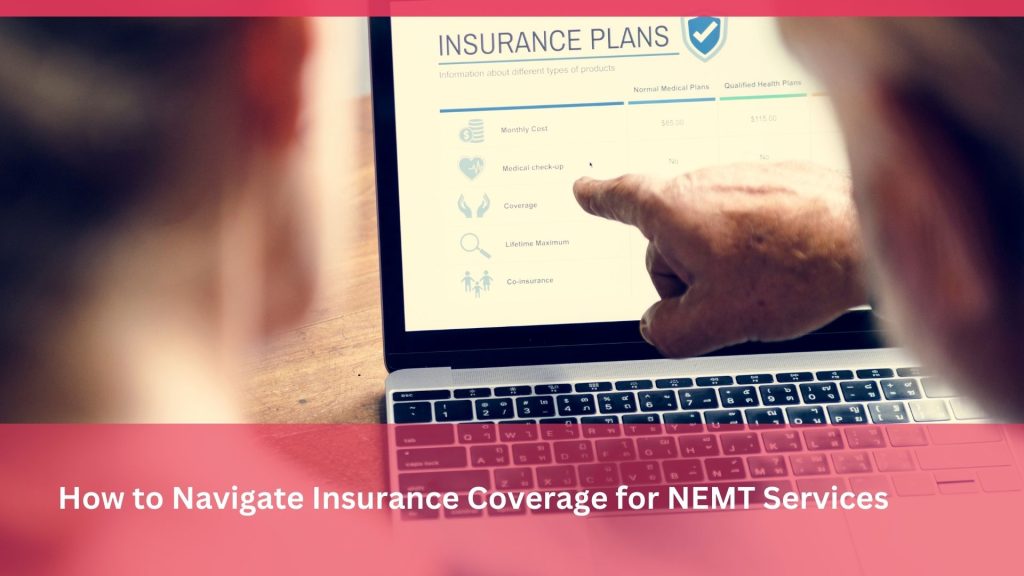New at Safr Care
How to Navigate Insurance Coverage for NEMT Services

How to Navigate Insurance Coverage for NEMT Services
Understanding how to navigate insurance coverage for Non-Emergency Medical Transportation (NEMT) can be crucial for patients who require regular access to medical services but face transportation barriers. This guide provides a detailed overview of the steps involved in determining eligibility, understanding what types of transportation costs are covered, and how to effectively coordinate these benefits with insurance providers. Whether you are a patient, caregiver, or healthcare provider, this information will help ensure that necessary transportation services are accessible and utilized effectively.
1. Determining Eligibility
The first step in navigating insurance coverage for NEMT is to determine if you or your patient is eligible for these benefits. Here’s how to start:
- Review Your Health Insurance Policy: Check your policy details or contact your insurance provider to find out if NEMT is covered under your plan. Medicaid and Medicare Part B often cover NEMT for non-emergency medical visits when medically necessary.
- Understand the Criteria for Eligibility: Coverage typically requires a doctor’s certification that transportation is necessary for your health care needs.
- Check for Pre-approval Requirements: Some policies may require pre-approval or a doctor’s note before you can utilize NEMT benefits.
Knowing these details will help streamline the process and prevent unexpected costs.
2. Understanding Covered Transportation Types
Insurance plans vary significantly in what types of transportation they cover. Familiarize yourself with the specifics:
- Emergency vs. Non-Emergency: While emergency transport is typically covered, non-emergency transport may have more restrictions.
- Type of Transport Services: This can include ambulance services, wheelchair van services, or rideshare programs that are medically appropriate and cost-effective.
- Geographic and Service Limitations: Some insurance plans may limit coverage to certain geographic areas or specific types of visits.
Understanding these aspects ensures that the transport services align with what your insurance will cover.
3. Coordinating with Insurance Providers
Effective coordination with your insurance provider can simplify the process of using NEMT services. Consider the following steps:
- Maintain Open Communication: Regularly update your insurance provider about your transportation needs and any changes in your health condition that might affect your transportation requirements.
- Keep Accurate Records: Document all communications and submissions to the insurance company, including dates of transportation, receipts, and any correspondence related to NEMT services.
- Seek Assistance from NEMT Providers: Many NEMT providers are experienced in dealing with insurance claims and can offer assistance or manage the claims process on your behalf.
Proper coordination helps ensure that claims are processed efficiently and reduces the likelihood of disputes or denials.
4. Leveraging Additional Resources
If your insurance provides limited or no coverage for NEMT, there are other resources that might help:
- Local Health Departments and Community Programs: Some local agencies provide transportation assistance for medical appointments, especially for seniors or those with disabilities.
- Charitable Organizations: Non-profit organizations sometimes offer transportation services or can help cover costs through grants and other funding.
- State Medicaid Programs: If you are eligible for Medicaid, check if your state offers additional NEMT benefits.
Exploring these options can provide alternative solutions if insurance coverage is insufficient.
Conclusion
Navigating insurance for NEMT services requires understanding your coverage, coordinating with providers, and knowing where to look for additional support. By taking these steps, patients can ensure they have access to the transportation they need for critical medical care, thereby improving their overall health outcomes and maintaining their quality of life.
